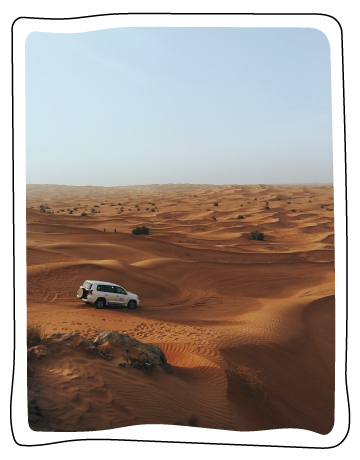Friendly disclaimer! We want to be as accurate as possible, but given these challenging times, we urge you to recheck that the venues are open when you decide to visit.
Petra, the “Lost City” of Jordan, is a wonder of the world that history buffs and intrepid travellers find hard to resist. This UNESCO World Heritage site happens to be one of the most popular destinations today. The desert topography coupled with the rugged mountains and canyons provides a perfect setting for its red rock-cut architecture.
Petra is located in southern Jordan. It was once the capital of the Nabataean empire (between 400 BC and AD 106), once a flourishing trading centre for the nomadic Nabataeans who roamed the Arabian desert in search of water and pastures. It was soon conquered by the Romans in 100 AD, and the onset of several earthquakes, later on, reduced this glorious city to ruins. Petra was eventually abandoned. The city would have been lost to us had it not been for a European traveller in the 1800s who chanced upon this mysterious city in ruins, disguised as a Bedouin.
Today, Petra is one of the ‘New 7 Wonders of the World’ (named in 2007) and continues to lure travellers, scholars, and storytellers. Here are some offbeat ways to experience this stunning city and its surroundings.
Wadi Musa
Wadi Musa or ‘the Valley of Moses’ is the town that has organically sprung up around Petra (it is also referred to as a village). The hastily built hotels, restaurants, and shops are signs enough that Wadi Musa surfaced to meet the growing demands of tourism in the 90s. In the heart of the hustle and bustle lies an old-world town that’s laid-back and charming, teeming with local artisans and their eye-catching crafts. It’s just the place to spend time in if you want to taste the flavours of local food and the charming hospitality of the local people, which lend the place its characteristic ‘down-to-earth’ feel.
Unravelog tip: Savour a meal at one of the local restaurants serving Bedouin cuisine – it’s sure to transport you to a different era! Try mansaf in My Mom’s Recipe and the best traditionally cooked lamb at Beit Al-Barakah, for instance.
Location: Wadi Musa
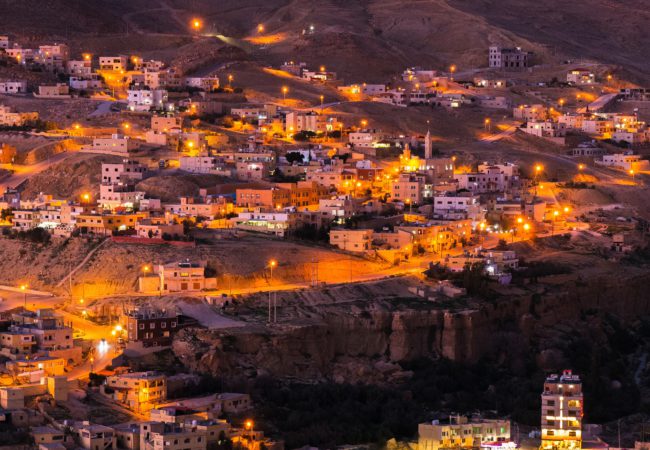
Siq
Siq (meaning ‘shaft’) is a narrow corridor that runs for 1.2km with narrow, vertical rock walls that are 200 metres high. It was formed when tectonic forces forced apart a large rock, creating this passageway that the people transformed into a sacred space. It leads to the magnificent Al-Khazneh or the Treasury, which is usually the first gasp-worthy site for visitors into Petra.
It is worth visiting the Siq if one wants to witness the Nabataeans’ technical and aesthetic marvel that this site stands testimony to. It comprises religious iconography (baetyl) of the Nabataean god Dushara, votives, and incense altars that make it clear how sacred the passageway was for the people in those times. Scholars have written about the importance the Siq held for pilgrims and devotees for whom religious rituals usually began with a walk through this narrow passageway, till they reached the heart of the city.
Location: Al-Siq
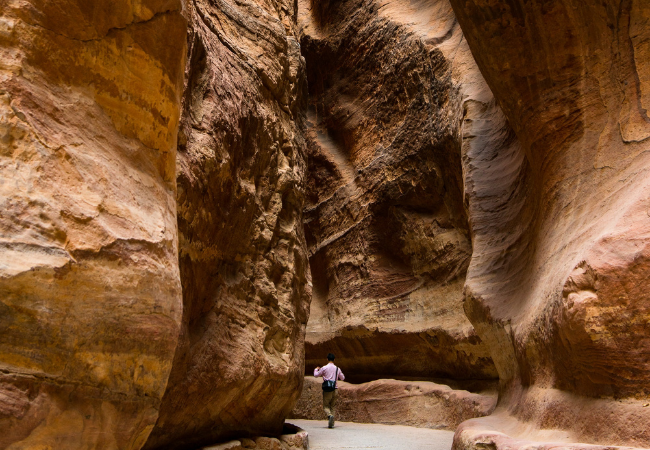
Little Petra
Siq al-Barid (meaning “cold Siq”), known more popularly as Little Petra, is located around 8 km north of Wadi Musa town. This place is made of landscape, architecture, and rock-cut facades that are similar to Petra but without the crowds. Little Petra is a great option to get away from the tourist-heavy spots of Petra and to enjoy the landscape and archaeological wonders in quieter surroundings; the Nabatean ruins here are just as fascinating. The place has earned its name from the fact that it’s colder than Petra with almost no sun! Little Petra is only about 350 m long. Its quaint rock-cut stairs give you the liberty to explore the area freely. You might be accompanied by local people and their families, especially on a Friday afternoon.
Unravelog tip: Don’t miss the Painted House, a rare biclinium that features painted interiors from the Nabatean era, one of the very few to have survived the centuries!
Location: Little Petra
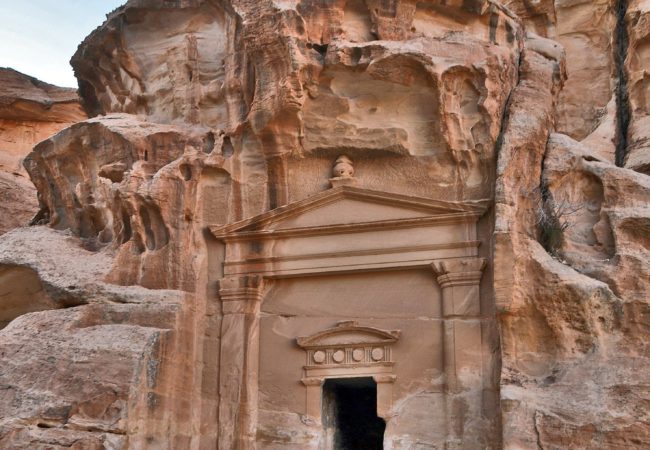
The ancient ruins of Jerash
The ancient ruins of Jerash are relatively less known compared to the more touristy flair of Petra. Jerash was once a Roman city and is perhaps the best spot in Jordan to see its history with material remains that speak of their Roman legacy. It was hidden for centuries and most parts of the city remain unexcavated even today. This makes Jerash one of the best-preserved Roman cities around the world! This ancient city once saw Alexander the Great and the mathematician Nichomachas tread through its sandy landscape.
When in Jerash, do not miss a visit to the two theatres, the temple of Artemis, and a forum surrounded by more than 100 columns that reminisce the best of its Roman legacy. Today, Jerash is known for its olive oil produced in local olive presses that visitors can tour. You can shop for your choice of olive oil from the local market or indulge in a meal cooked with it at a local restaurant. The easygoing charm of the people in this antiquated city is something you should experience when in Petra.
Location: Jerash
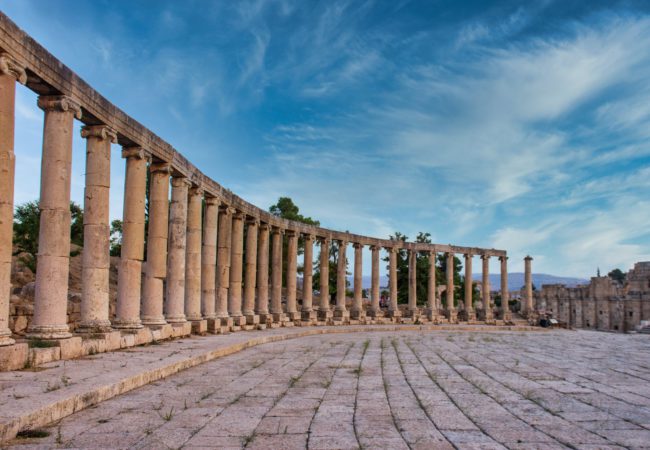
Petra at sunset
If you wish to revel in the sublime beauty of Petra’s landscape and ruins, it is mandatory that you witness the city during sunset, and see the evening light cast its spell on red stone vistas.
It is best to stay at Wadi Musa to be able to get the best out of the early morning and evening sightseeing. One of the best spots to view the sunset from is Al-Deir; you will have to climb an impressive 800 stairs to get the most amazing view of sunset in Petra. Once you have made it, the sight of the Petra melting with the changing hues of the setting sun is worth every bit of the effort! There are also a number of other viewpoints in Wadi Musa to get dramatic views of the Petra valley during sunset.
If you are willing to take a ride for a couple of kilometres, Wadi Rum is another spot for thrilling sunset views. See the sky transform into mesmerising colours and blanket the red and yellow mountains of Wadi Rum. This protected desert area has plenty of open spaces and the rock formations here are easier to climb, which gives travellers more accessible points to enjoy the sunset. Um Sabatah, Um Mugur, and the sand dune of Al Rameh are some great viewing spots that will have you absolutely enthralled in the frenzy of colours.
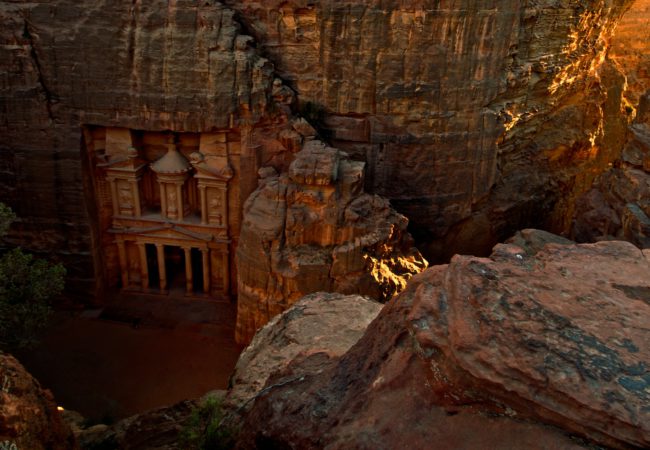
Petra by night
The ethereal candle show in Petra is a sight and experience of dreams. The area around Siq and the Treasury is lit by 1500 candles three times a week (Monday, Wednesday, and Thursday, at 8 pm). It is a magical way of viewing Petra at nighttime. This ritual of sorts was started to recreate the experience of travellers who stayed in Nabatean tombs and Bedouin homes that would be lit with plenty of candles.
Petra by Night is organised by a number of local tour operators. You begin at the main entrance of Siq and walk through the narrow passageway into the ancient city. The walk is also reminiscent of the pilgrim tours of yore who walked these routes to the Treasury lit by candlelight and flanked by religious iconography as touchstones of their spiritual journey.
Location: The Treasury
Price: Tickets cost JD 17. Attendance is free for children under 12 years old.
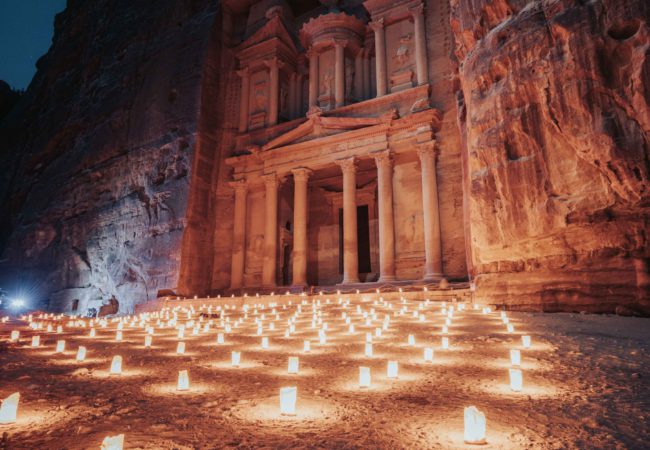
Camel rides and horseback riding
If you are in Petra and you are tired of hiking, you should go on a customary camel ride and one on horseback too. It will take a little bit of adjusting to riding a camel, but you will be regaled by tales of Petra and the many oral lores of Jordan by the good-natured Bedouins who will accompany you. Take a camel ride to experience a facet of slow travel (quite literally) in Petra!
Another fun way to explore Petra’s ruins is on horseback, while you meet and interact with the locals. Jordan’s rugged landscape is perfect for this slow adventure and gives you a taste of how the ancients once travelled.
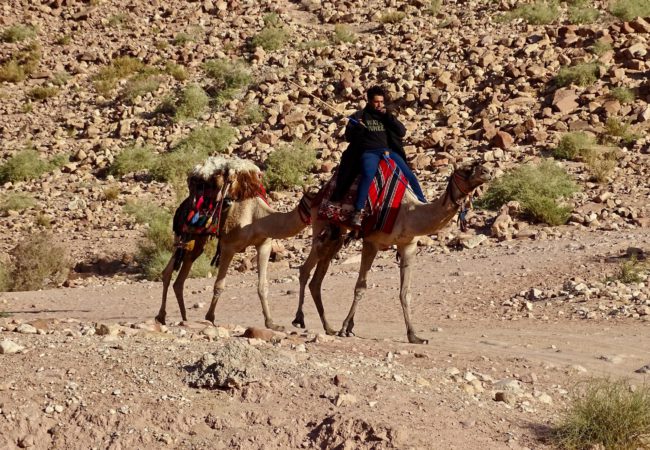
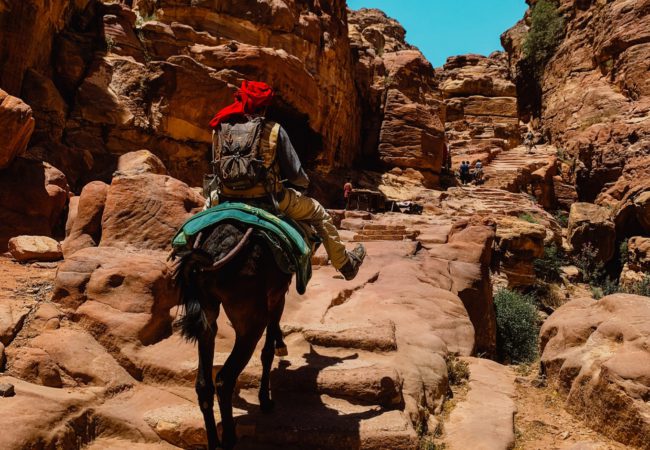
Bedouin camps
One way to experience the authentic wilderness of Petra is to spend a night or a few in a Bedouin camp. These camps dot Petra’s landscape, tucked away amid the gorges and rock formations as well as in the sandy dunes. Staying in one of these camps is one of the best ways to get up close and personal with the Bedouin way of life while lying down beneath the clear open sky and to the whispers of their nomadic ancestors in your ears.
The Bedouin camps are cosy and provide sufficient privacy. These tents are set amid fantastic views of the desert, the ruins, and the scenic Petra Valley – and are sure to take your breath away. You will get a chance to stay with locals and enjoy communal meals in the company of their warmth and storytelling finesse. This is an experience like no other for intrepid travellers.
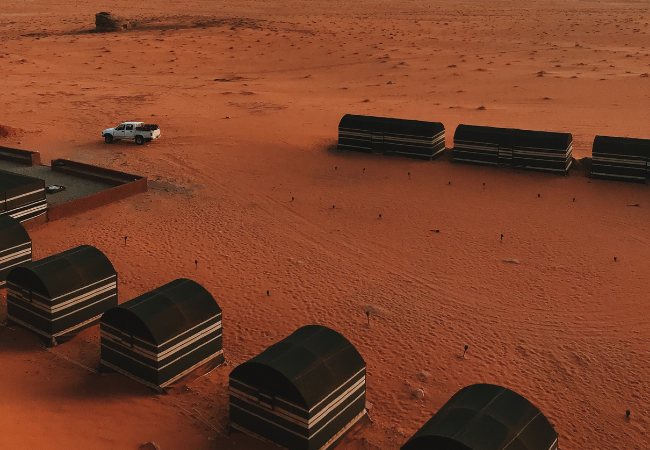
Petra’s incomparable charm lies in these hidden corners and more. The best time to visit this arid place is during springtime in April-May or in the autumnal months of October-November. So plan your next adventure to this charming city filled with stories and adventure!




